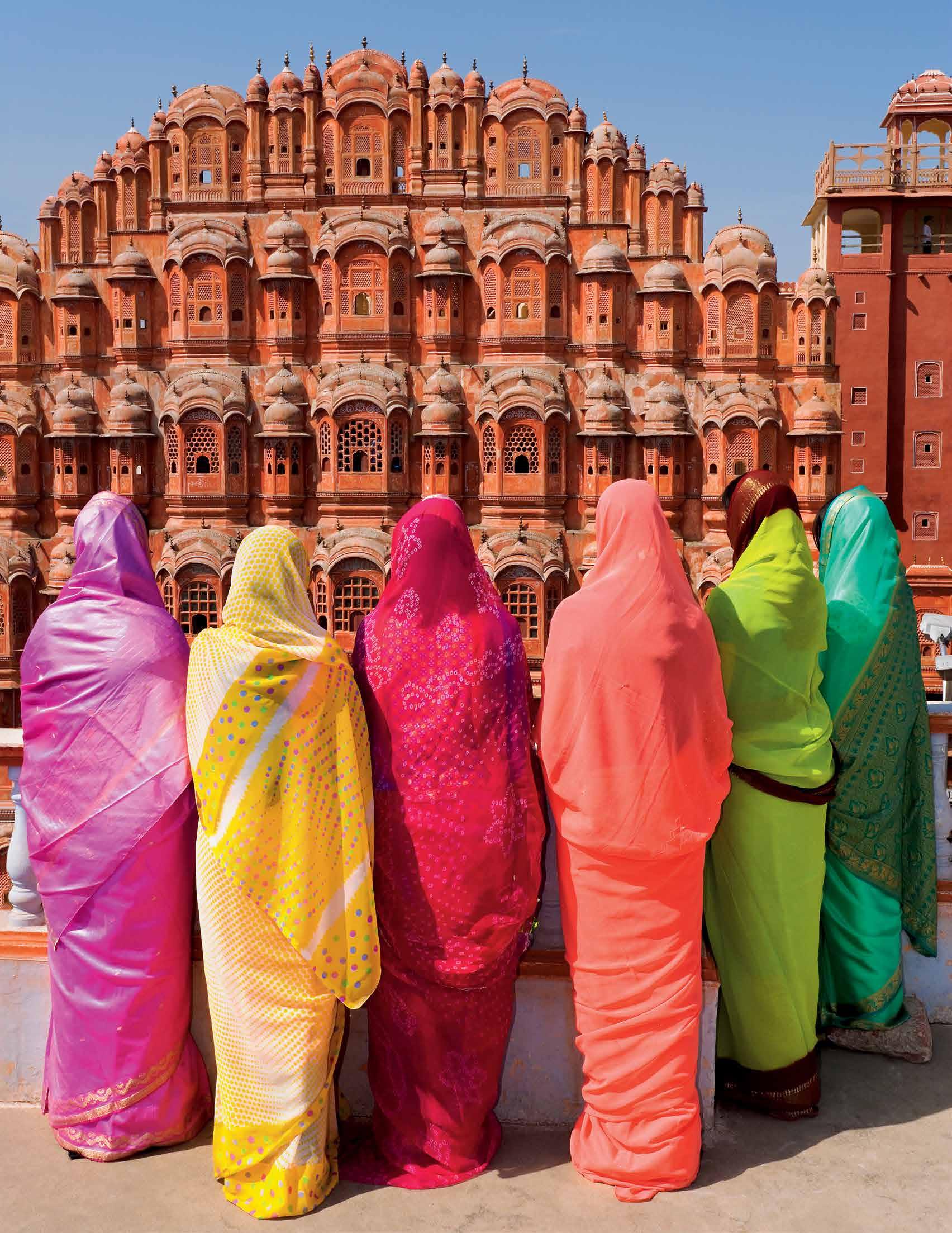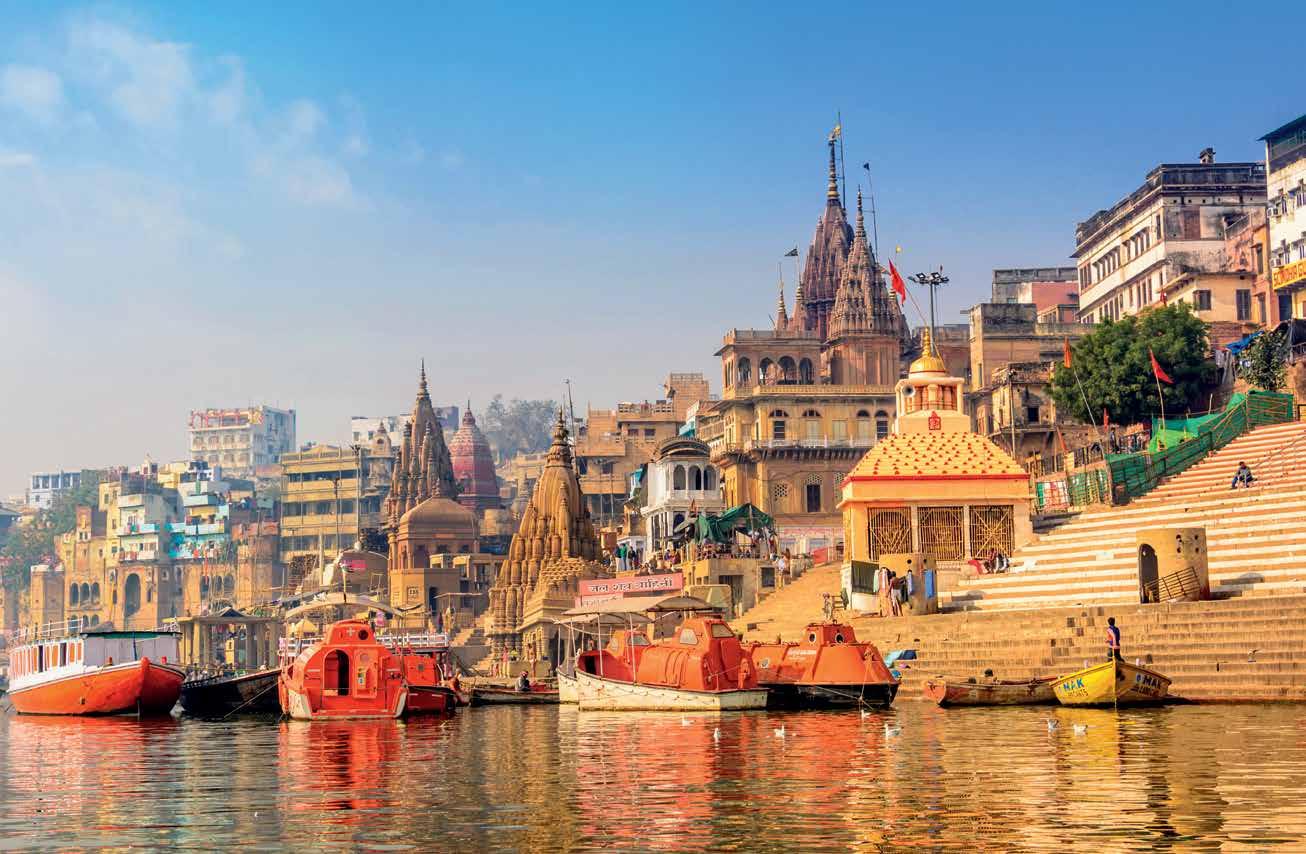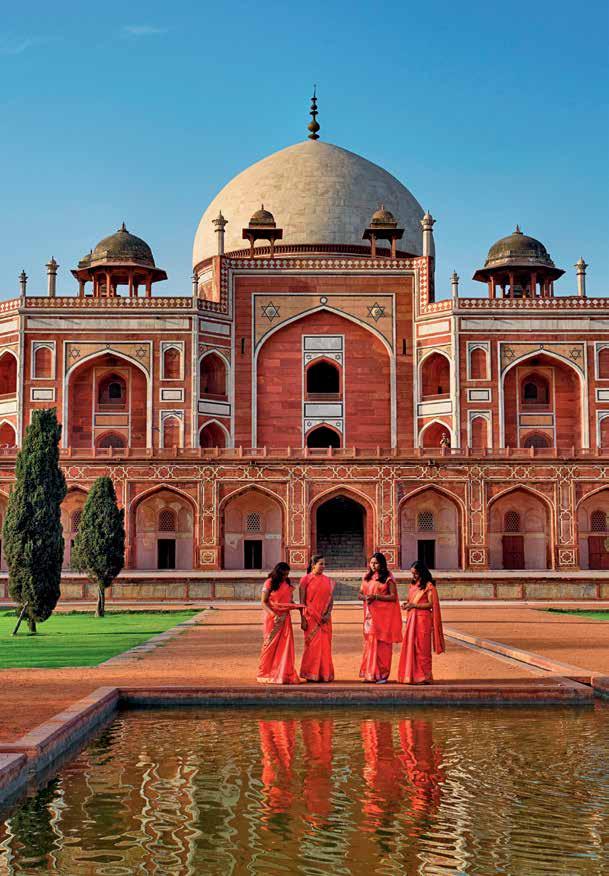
4 minute read
Classic Indian Journeys

THE SOUL OF INDIA
Advertisement
16 days Departs Wednesday, returns Thursday
onths, years, decades could profitably be spent exploring India’s 812 million Mrichly varietal acres. But few of us have time to follow our bliss indefinitely, so we created The Soul of India to provide a thoughtful, succinctly paced, and delightful look at some of the continent’s most eye-brightening sights. We begin in Delhi, “always interesting to all mankind” as Ved Mehta quoted a taxi wallah as saying. Then we pay homage to the Taj, whose praises we sing throughout this brochure. We peacefully search for what is perhaps the most splendorous animal on earth in Ranthambore National Park, wander the glamorous Pink City of Jaipur, and witness intense spiritual devotion at Varanasi, “the most supremely potent pilgrimage site on earth.” We end in the supercity of Mumbai, a distillation of India’s incredible energy and ambition, its daily familiarity with and deep attachment to its many thousands of years of history.
The Indian way of life provides the vision of the natural, real way of life. We veil ourselves with unnatural masks. On the face of India are the tender expressions which carry the mark of the Creator’s hand.
—George Bernard Shaw,
Science and Technology in
India Through the Ages

day 1 En route
days 2–4 Delhi
“Charming, capricious, imperial” (as John Foster
Fraser wrote), Delhi is one of the world’s most intriguing mega-cities. Based from the modern, centrally located Taj Mahal Hotel, we’ll visit the imposing war memorial India Gate as well as Humayun’s Tomb (an inspiration for the Taj Mahal of 73 years later). With our Travel Director at helpful hand, we’ll wend Old Delhi’s twisting maze of streets and narrow, bustling, breathtakingly colourful byways, and visit India’s largest mosque, the imposing Jama Masjid and the nobly friendly
Gurudwara Bangla Sahib, second-most important shrine (after Amritsar’s Golden Temple) for India’s large and influential Sikh community.
days 5 & 6 Agra
There’s much more to Agra than the Taj Mahal.*
The Agra Fort is a masterpiece of Mughal architecture in its own right and the city itself is vivacious and engaging (which in India means extremely vivacious, exceptionally engaging). But “emeralds, rubies, and pearls...must pass away, yet still one solitary tear would hang on the cheek of time in the form of this white and gleaming Taj Mahal,” as
India’s great laureate Rabindranath Tagore wrote. Heartliftingly, almost hallucinatorily beautiful, the Taj Mahal is one of the first artifacts we would present to aliens as proof of humanity’s worth. Our hotel, the universally admired Amarvilas, is a delight for those of us bewitched by the Taj: every window in the hotel looks out at the very nearby monument.
*Pronounced Taj Meh-hel, by the way. Mahal is a palace, taj is a crown: hence the Taj is the crown of palaces. days 7 & 8 Ranthambore National Park
We drive in the morning to Ranthambore and the exquisite and intimate Oberoi Vanyavilas, named
India’s #1 resort hotel on Travel+Leisure’s 2017
World’s Best Hotels list. We come to subtly beautiful Ranthambore (thought by many to be the inspiration for Kipling’s unforgettable The Jungle
Book, of Mowgli and Bagheera fame) to see Panthera tigris tigris, an incandescent beast many consider the most impressive of Earth’s many trillions of sentient beings. Our chances of life-sparking sightings are very good. We cruise the park under the guidance of our Travel Director and astute local guides, who can identify the park’s super feline denizens by name and number, and sense their presence by the jungly warning cries that everywhere accompany Shere Khan. Micato, ten-time winner of Travel+Leisure’s Number One Best Safari
Operator award, has a natural affection for Panthera leo, the African lion. But we must admit that seeing
Leo’s Indian cousin amble imperially in Ranthambore is an almost shockingly exciting experience.

days 9–11 Jaipur
Residents of the entrancing Pink City are Parisian in their pride of place, and the city is the historic home of what is probably India’s most famous and flamboyantly rich ruling family. In fact, our three nights in Jaipur are spent in the Rambagh Palace, the fabulous former home of one of them, the great
Maharajah Sawai Man Singh II.
Monuments to the wealth and monumental ambition of Jaipur’s maharajahs abound: grand
City Palace, where members of the family still live; the Star Warsy observatory of Jantar Mantar, and huge yet lyrical Amber Fort, designed for
PREVIOUS PAGE Indian ladies in front of the Palace of the Winds, or Hawa Mahal, one of Jaipur’s many architectural masterworks. The Palace allowed sequestered women to look out at the—then as now— rambunctiously vibrant streets of the city. OPPOSITE PAGE The Ganges riverfront, Varanasi, “perhaps the earth’s most supremely potent pilgrimage site,” and, below, Humayun’s Tomb, Delhi. BELOW Extremely royal Bengal tigers, Ranthambore National Park. No one ever said it better than Blake: “Tiger tiger, burning bright / In the forests of the night / What immortal hand or eye / Could frame thy fearful symmetry?”







